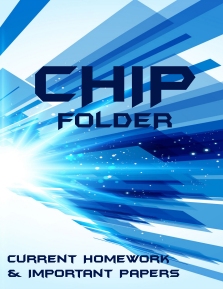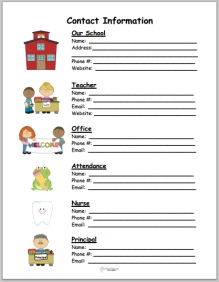 Teaching is a big job. It can get overwhelming to plan for, remember and execute everything you’re supposed to. In an effort to help a good friend who’s starting teaching this year, I recently read a great article by Karen Zauber and it got me thinking about questions teachers should ask. I’ve put together a list of some questions all teachers should ask at the start of the school year and periodically throughout the school year. Some questions are for you to ask yourself, and others are for you to ask someone else. Please comment below if there are any important questions I missed!
Teaching is a big job. It can get overwhelming to plan for, remember and execute everything you’re supposed to. In an effort to help a good friend who’s starting teaching this year, I recently read a great article by Karen Zauber and it got me thinking about questions teachers should ask. I’ve put together a list of some questions all teachers should ask at the start of the school year and periodically throughout the school year. Some questions are for you to ask yourself, and others are for you to ask someone else. Please comment below if there are any important questions I missed!
Establishing the Climate of My Classroom (To Ask Myself)
- How do I expect students to turn things in? (This is definitely something to tell students on the first day!)
- How much noise can I tolerate? “It’s easier to start out more controlled and gradually open up to activity and noise than the other way around.” – Karen Zauber
- How neat and organized does my room have to be? Can I handle some clutter?
- What do I want my desk and classroom to say about me and what I value?
- How will I make myself inviting and approachable, while continuing to be the authority figure in the classroom?
- How will I make sure things are fair in my classroom? Read my post, Fair isn’t Equal: 7 Classroom Tips.
Conducting My Class Efficiently (To Ask Myself)
- How will I gain students’ attention before starting a new activity?
- How will I make sure I stay consistent in what I say and do?
- How will I make sure that the materials I give my students are correct and clear? Do I have a fellow teacher who I can ask to read over a letter I’m sending home to parents?
- What are my long-term goals? How will I keep them in mind as I do my daily planning?
- What routines and procedures do I need to teach my students? Check out my post on 30 must-have classroom procedures.
- What strategy will I use to learn my students names quickly?
Reaching & Encouraging My Students (To Ask Myself)
- Do I accentuate the positive?
- Do I show my students that it’s ok to make mistakes while learning? Do I acknowledge that I don’t know everything and that I sometimes make mistakes?
- Do I have the right balance of being serious about accomplishing work and making class fun?
- Do I move around the room enough as I’m teaching or do I stay in one place too long?
- Do I take time to really connect with my students and learn about who they are as a person (family, interests, dreams, etc.)? Click here for some fun “get to know you” games and activities.
- Do I talk to all my students, not just my favorite students?
- Do my student know that I expect them to succeed? Do I communicate this in my words and actions? Click here to see one idea for showing your students you’re proud of them.
- How can I use tone of voice and body language to keep students interested?
- How will I make sure I’m speaking in a clear, easy to follow way? What should students do if they don’t understand what I’m saying?
Applying Proven Teaching Techniques (To Ask Myself)
- Do I teach using a variety of strategies, or do I stick to only the strategies that are easy for me?
- Do I give students enough time to think after I ask a question? (You should wait at least 3 seconds after you ask a content question.)
- Do I have the right balance of working one-on-one with students, small groups and monitoring the whole class?
- Do I make sure students understand the content as I teach?
- Do I praise students appropriately? Am I specific in the praise I give? “If you praise them all the time — especially when they’re only doing what’s expected and no more, they won’t strive to do more. Remember, intermittent reinforcement is the most powerful way to reinforce positive behavior. Be selective in your praise. Be honest. Tell them when they’ve excelled and how they can improve. “ –Karen Zauber
Establishing Discipline (To Ask Myself)
- Am I consistent in what I say and what I do?
- Is my attention signal working? If it’s not, try something new!
- Do I control the class by using threats to control the class? “If you do use a threat, be prepared to carry it out.” –Karen Zauber
- Do I nip behavior problems in the bud? It’s easier to correct behavior problems when they first start than after it’s become a habit.
- Do I reprimand a student one-on-one or in front of the whole class? How does a public reprimand affect the student and the whole class?
Miscellaneous Questions (To Ask Myself)
- How will I get parents involved in my classroom?
- How will my class celebrate birthdays and special occasions? (Find out the school policy on this.)
- What school committees am I interested in being a part of?
Miscellaneous Questions (To Ask My Principal or Fellow Teachers)
- When can I get into my classroom to start preparing for the school year?
- What should I do if I have to be late to school unexpectedly?
- What programs are required by your school/district/state and which are optional or just a school tradition? (If you’re a new teacher focus on the required programs. Then once you’ve got a handle on those, add the optional programs into your classroom one at a time. I learned this the hard way during my first year.)
- What textbooks are available to me? Which ones am I required to use?
- If I need to step out of my classroom for a few minutes (emergency trip to the bathroom for example), what should I do?
- What is my budget? What things are covered in a grade/school budget? (Again, I learned the hard way. My first year, I paid for things from my budget that I could have gotten with my grade level budget. Also, Keep your receipts for taxes or if the PTA/PTO decides to reimburse some of them.)
- Does our school give out student supply lists? Am I allowed to distribute a supply list? (I once worked in a district that prohibited distributing supply lists.)
- Can I ask for donations from parents? Some schools allow a “wishlist” to go home, so parents can donate if they so desire.
- How can I obtain a copy of the parent/student handbook?
- What time commitments are there outside a traditional day (meetings, school events, conferences, etc.)?
- Exactly how will I be evaluated? Will I have advanced notice of classroom observations?
- How should I report attendance?
- What should I do if I feel like a situation is getting out of hand with a student or parent?
 I received free products from Oriental Trading Company in exchange for sharing my thoughts on this blog.
I received free products from Oriental Trading Company in exchange for sharing my thoughts on this blog.

 CHIP stands for “current homework and important papers.”
CHIP stands for “current homework and important papers.”




 There are so many things to keep track of at the beginning of the school year. There’s so much information to make sure your students and their parents know! I recently made a sheet of teacher contact cards. To along with that same idea, here’s my class contact page. Print out the page, write in the information and then run copies for your class.
There are so many things to keep track of at the beginning of the school year. There’s so much information to make sure your students and their parents know! I recently made a sheet of teacher contact cards. To along with that same idea, here’s my class contact page. Print out the page, write in the information and then run copies for your class.



 I absolutely loved this idea! It might work better with upper grades, since I don’t think younger kids have had enough exposure to memes to get as much out of this activity.
I absolutely loved this idea! It might work better with upper grades, since I don’t think younger kids have had enough exposure to memes to get as much out of this activity.